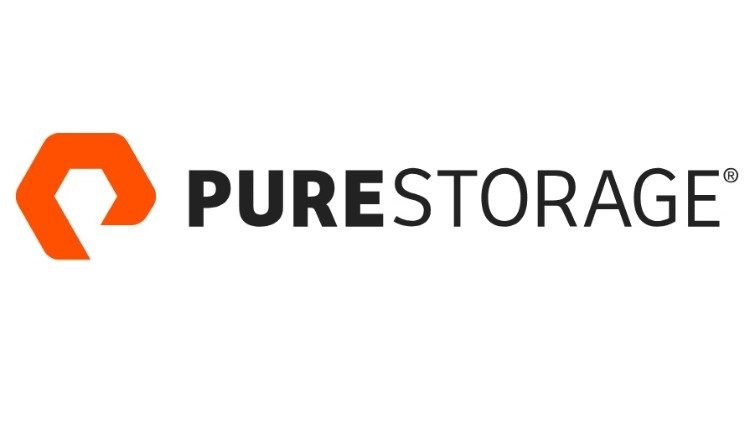Technology predictions – Patrick Smith, CTO EMEA

Digital transformation backlash
For those businesses that hadn’t already embarked on a digital transformation journey, the pandemic forced them to overhaul their IT, and at speed. In the process, many companies over-rotated in their technology choices, opting for infrastructure beyond their needs and choosing expensive solutions with vast capacity. In the long term, these choices may prove unsustainable, and in 2021 businesses will need to refocus on the medium-term, rebalance and opt for the solutions that fit their needs whilst remaining agile. In 2021 the CTO’s role will need to adapt to being the ‘renegotiator’ — finding the best tuned systems for streamlined budgets.
As ransomware peaks, backups will offer the last line of defence
Whilst in many cases the pandemic has brought out the best in people, it has also brought out the worst in some. Hackers have taken advantage of the remote working phenomenon to catch users when they’re vulnerable, leading to a number of unscrupulous attacks. As such, in 2021 we’ll see a continued rise in devastating ransomware attacks, which will lead to organizations turning to backup technologies and services as their last line of defence. With sustained downtime being almost as expensive as paying the ransom, the speed at which systems can be restored is becoming increasingly important. As such, winning organizations will look to adopt backup solutions that ensure systems are back online within minutes or hours rather than days.
Flexible consumption models will give organizations the breathing space they need to win
With so much uncertainty still upon us, it’s unlikely that we’ll see the majority of organizations relaxing their purse strings anytime soon. Next year we’ll see businesses keeping a closer eye on their spending and reducing overall costs. A key way to do so is by opting for flexible consumption models for their IT infrastructure. Having the ability to manage costs over time without a long-term contract will be vital, and being able to avoid large and risky capex infrastructure investments will help organizations to keep themselves in the black.
Tolerance for security and IT failure will drop even further
In the rush to digitize, organizations might not have given much thought to the complexity they were creating in their systems, resulting in costly periods of potential downtime. This problem has become increasingly unacceptable, and sustained periods offline are just as damaging to reputations as they are to bottom lines. Despite the complexity organizations may have added to their own systems, in 2021 I expect total intolerance to downtime and security issues from customers, partners and employees.
Forget containers — 2021 will be the year of the application
For several years, containers have featured in our predictions, whether it be containers going mainstream or the rise of stateful container workloads. As this space further matures, we see container granular solutions becoming important and application centricity becoming essential. It’s all about the business application; consistent and reliable day to day operation, encrypting its data, backing up the whole application, not just its data, and being able to freely move the application from environment to environment, datacenter to datacenter or cloud to cloud-based on changing circumstance. Whether it’s homegrown or off-the-shelf, the focus is on the application.
Channel predictions – Matthieu Brignone, VP Global Partner Organization, EMEA & LatAm

Partners will shift from short-term fixes to helping modernize IT environments
As businesses were forced to switch their employees to remote working, there was understandably an immediate appetite for core IT commodities — demand for VPNs, monitors and other peripherals sky-rocketed. But as we move into the year ahead, businesses will inevitably turn their attention towards technologies that will not just help them stay afloat, but build a competitive edge. The channel has already proved its worth in the short-term, but will now have to resume its role as a long-term strategic consultative partner — helping customers modernise their IT environment as the world adapts to new realities that are here to stay.
Creativity will distinguish the leaders from the laggards
The Zoom model has exposed where vendors have lacked creativity in maintaining their relationships with partners during 2020. Amongst the various lockdowns, the channel has looked for its vendors to be energised, and traditional one-size-fits-all calls and video conversations simply do not fit the bill. Instead, creativity and motivation emerges through bespoke approaches to each individual relationship. Be it the gamification of sales targets, or home-delivering branded goodies, partners need to feel valued, incentivized and supported to grow and exceed sales expectations in 2021.
Business Predictions – James Petter, VP International

Environmental and Social Governance (ESG) commitments will set companies apart
We will see greater pressure on organizations to officially commit to decarbonisation goals in the year ahead. 2021 will be the year in which it will not only be socially unacceptable to have a heavy carbon footprint, but companies will also be judged on how they reduce their environmental impact. To do this, organizations will need to abandon expensive and carbon-heavy equipment refreshes, like the old way of procuring technology hardware. Instead, they will turn to smarter software solutions that can perform and scale as needed, without having the planetary impact of rip and replace upgrades.
Businesses will become beholden to a ‘need for speed’
Much like this year, 2021 will likely see local lockdowns implemented at short notice, affecting the delivery of goods and services almost instantly. Successful businesses will be those which can pivot quickly and efficiently to the changing environment without affecting the customer experience. As consumers, our patience when engaging with slow technology has reached a new low — we demand instant access and service. This attitude is now mirrored in our professional lives, and the lines have blurred between how B2C and B2B companies deliver goods and services, with speed being key. Organizations need to ask themselves some tough questions around how legacy infrastructure is holding them back, and whether they can afford to lose customers if they cannot deliver at the speed needed.
And finally……if 2020 is a ‘teachable moment’, 2021 will distinguish the graduates from the students.
2020 has shown that many businesses did not have their house in order. Leaders were caught off-guard by the digital transformation requirements of the pandemic, and many over-invested in short-term solutions. Organizations will need a holistic view of where the pressure points in their Organisation are, so they can adapt supply chains to ensure minimal disruption. The ‘graduates’ of 2020 will recognize that the longer-term solutions they put in place will need a greater emphasis on ensuring their organizations can remain agile and adapt to changing environments.











